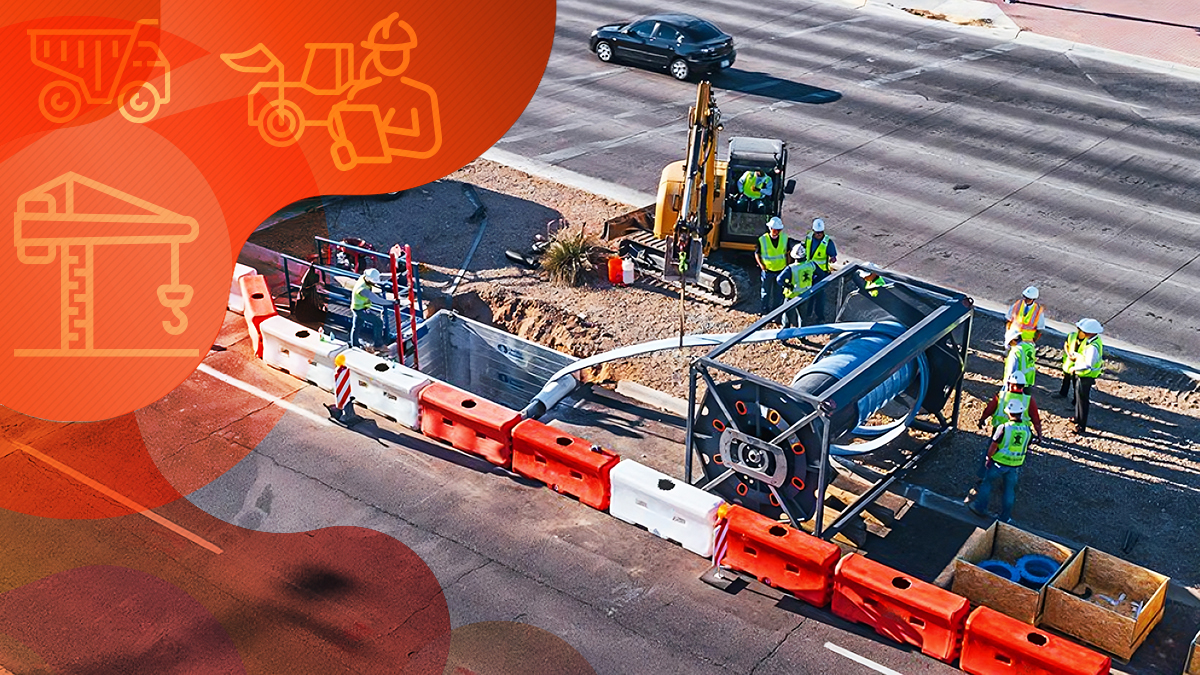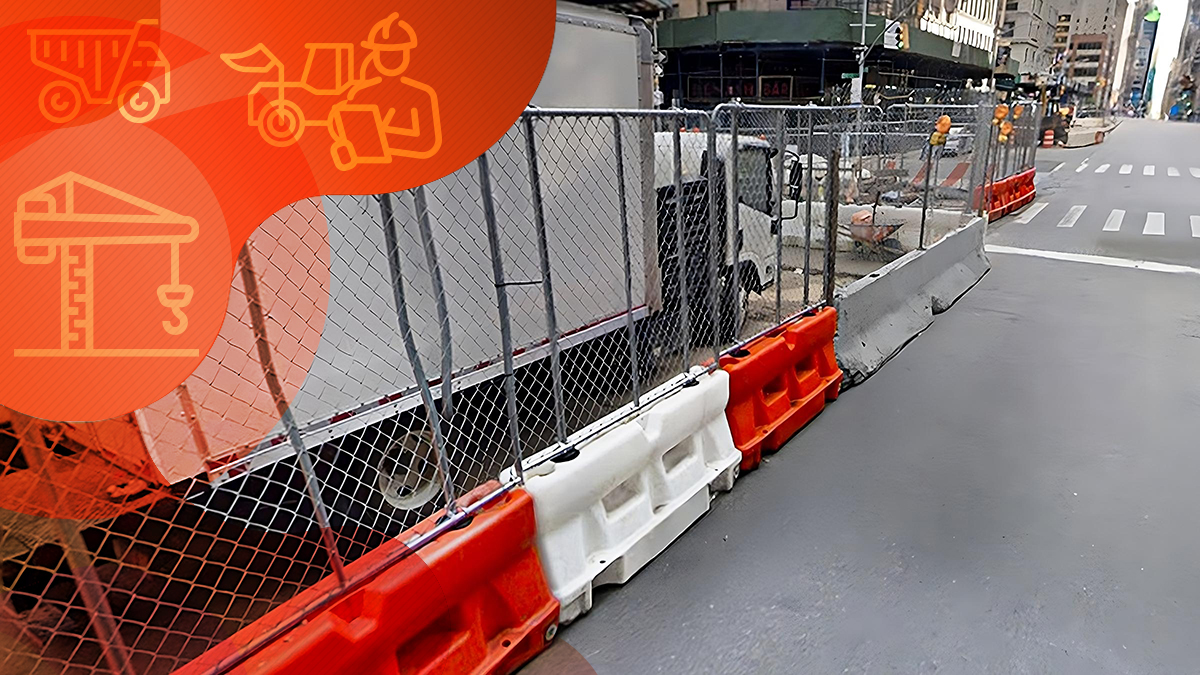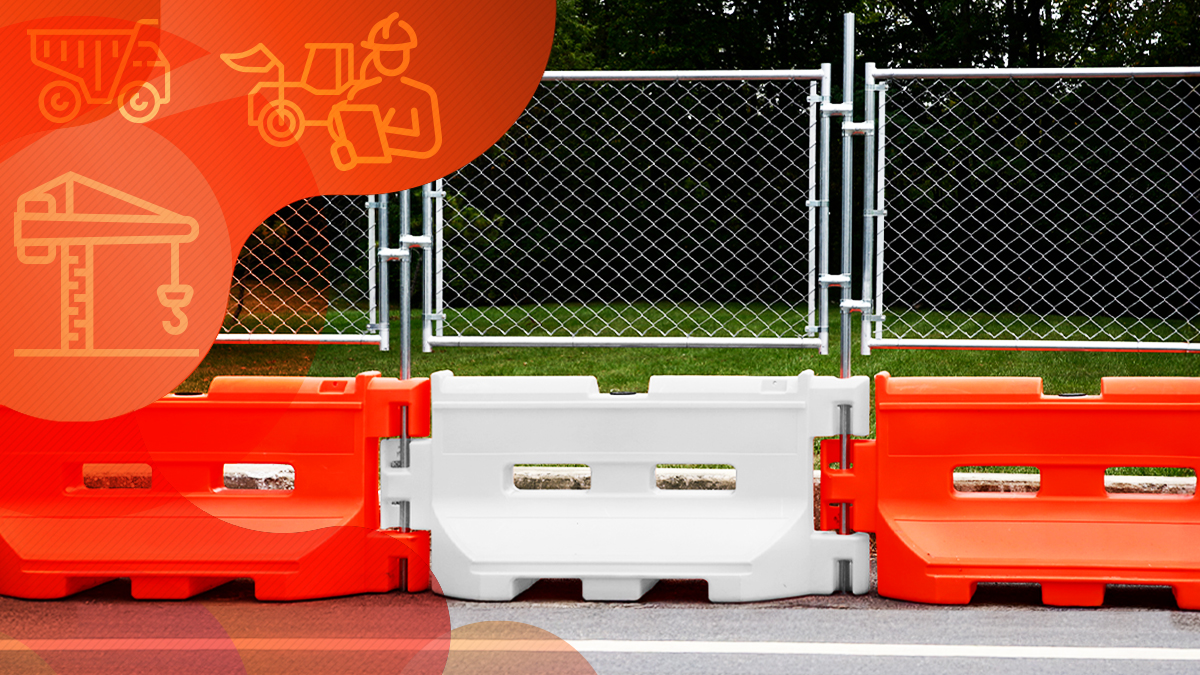Fence Bases for Construction Zones

In 2022, there were 169,600 recorded cases that involved work-related injuries or illnesses in the construction industry. At more than $8.83 billion a year, worksite accidents are an expense you can’t afford.
Safety is a top priority at SONCO, and our construction customers feel the same. When evaluating the safety protocol for your work zone, the safety and efficacy of temporary fencing should not be overlooked.
Boost Construction Safety with Low-Profile Fence Post Bases
Temp fencing and fence bases play a crucial role in cordoning off construction sites and traffic work zones, and they minimize trip-and-fall injuries in and around your jobsite.
These incidents are among the most common types of construction accidents, according to the U.S. Bureau of Labor Statistics. During 2019, falls, slips and trips resulted in a median of 28 days (about 4 weeks) of missed work for injured parties.
Before you choose temporary fences for construction zones, check out the main reasons why low-profile fence base designs are a great alternative to sandbags and concrete blocks.
Fence Stability Goes Beyond Sandbags
While sandbags may be an inexpensive option for stabilizing your fence, they’re not the most efficient or effective.
Sandbags can shift, leak, and often fail, leaving your fence to fall over because they’re not specifically made for the job. Your temp fencing may not be permanent, but it still needs to be secured appropriately for the duration of your project.


Traditional/DIY Fence stabilizers
Construction managers use several methods to stabilize their work zone fencing. Some are effective and reliable while others don’t quite hit the mark.
All too often, to save time and money, managers will hastily choose stabilization methods like concrete blocks and sandbags.
Cutting corners like this can backfire when safety must be held as a top priority.
Those cheap fixes to keep your fence from falling could become big expenses in the form of lawsuits, worker’s compensation claims, and equipment replacement or repair. It isn’t worth it.
Here’s a breakdown of the various types of temporary fence panel stabilization solutions, and why they’re not recommended:
Sandbags
Sandbags are messy, unstable, and unreliable. The sandbag material is often thin and weak, and therefore prone to tearing and splitting. In a short time, they can become frayed, further weakening the fabric, causing it to fail.
Using sandbags can increase your liability, especially in high-traffic areas where pedestrians or your construction crew may be at increased risk of injury if they fail. They can be a tripping hazard or fail, leaving the fence to fall over.
Concrete blocks
A big problem with concrete blocks is that they retain water. This can lead to efflorescence, which causes salt to migrate to the surface of concrete or other porous materials, forming a white powdery substance. While this process is not dangerous, it can keep your fence posts in a constant state of exposure to moisture and salt, causing the steel to weaken and rust.
Concrete blocks can also slip and shift, leaving the fence panel with no stabilization.
Metal tube stands
Metal tube stands are often used as fence stabilizers. They are made for the fence panels and typically have a large base that prevents the fence from falling over. This can be effective in certain environments but may not be enough in areas that are prone to high winds or harsh weather.
The main issue with these stands is that they often don’t allow for bolts or other methods that make the fence base more secure. A tube stand may not be heavy enough or broad enough to provide the necessary stability without some form of reinforcement.
Extra fence panel perpendicular to the fence
Installing a fence panel perpendicular to the primary fence may work in situations where space is not an issue, but most of the time that is not the case. Often the panel sticks out and obstructs walkways or work areas, which increases the potential for accidents.
This method of fence stabilization can also be problematic if the perpendicular panel is not properly secured to the fence. This can lead to not only the fence falling, but the extra panel as well.
How to properly stabilize a fence panel?
Fence bases that are made to fit your temporary fence panels are the most reliable way to keep your fence upright and secure. They can be anchored to the surface the fence is on, such as concrete or asphalt, and will decrease the chances of injury due to your fence falling.
Knowing how to reinforce a fence panel the right way reduces your liability and makes your construction site safer for everyone.
Reasons why a fence can be prone to falling
Without an effective fence stabilizer, your fence can be prone to falling, causing injury and property damage. There are many reasons that a fence may fall, making stabilization more important than ever.
Environmental Factors
Fence damage from wind is one of the most common reasons that fences fall. That isn’t the only reason though. Excessive rain, ice, snow, flooding, and vibrations in the earth can all cause fence panels to shift and fall over.
Uneven ground and soft soil are also culprits because the panels can sink or tilt, making it easier for them to fall.
Improper Installation
A properly installed fence will be more solid than one that is not. This means the area where the fence is to be installed must be surveyed to ensure it is on even ground or that accommodations are made for ground that isn’t even.
Weak connections are a common reason for fence failure and inadequate anchoring is another. The manufacturer provides good information on installation and anchoring. It’s good practice to follow their recommendations.
Damage or wear
Even temporary fence panels need to be inspected and maintained regularly. This allows you to identify issues such as wear and tear, damage, or weaknesses before they become a problem.
Best ways to stabilize a fence panel
The best way to stabilize temporary fence panels is by using fence bases made specifically for the job at hand. Fence bases optimize the stability of your fencing which increases the security of your work zone.
Anchor Stand
The Anchor Stand is more durable and effective than metal tube stands. It’s a good choice for projects that require moderate stability, and a smart investment. It won’t bend or rust over time and is made from 100% recyclable PVC, outlasting metal tube stands by 5 times.


Anchor Weight
The Anchor Weight is a broader, high-vis plate that is constructed to be highly durable as well as easily portable.
These stands can be stored easily and reused from work site to work site. They’re a more effective, safer alternative to metal tube stands, and are space-efficient so they are less invasive and less of a tripping risk.


Why Choose the Anchor Base?
SONCO’s fence stabilizers are the leading alternative to concrete blocks and sandbags.
With products easily deployed in any environment, it’s seamless to move your temporary fence system from one site to the next. Enjoy advantages like these when you give up sandbags and trust the Anchor Base for your next project:
- High Visibility: Every SONCO fence base product includes high-viz inserts in bright orange or yellow. While concrete bricks and sandbags sometimes go unnoticed, these bright-colored fence bases stand out and grab people’s attention. Reduce trip and fall accidents by switching out sandbags!
- Easy Transport: With a stackable design and built-in handholds for easy carrying, SONCO fence bases are easily stacked and transported during deployment and worksite clean-up. At larger worksites, your team can transport batches of stacked fence bases with a hand truck or forklift.
- Exclusive Design: Sandbags must be bulky to weigh enough for optimal stability. SONCO fence bases have a slim, low-profile design that stays out of the way and minimizes accidental stumbling.
Ready to Improve Construction Safety? SONCO Can Help!
If you’re tired of replacing split sandbags and broken concrete blocks — or you’re worried about tripping injuries — there is an alternative!
Avoid unforeseen accidents and unnecessary liability with SONCO fence bases, the perfect substitute for concrete blocks and sandbag stabilizers. To learn more about our proprietary fence base designs, browse our construction fence systems or request a quote today.
Trend now

Reducing Impact Damage with Water-Filled Plastic Jersey Barriers
Understanding the effects of barrier materials on vehicles and their occupants can help improve road safety.

Choosing Between Concrete or Plastic Jersey Barriers
Not all barriers are built the same. Here’s what to know before choosing between plastic and concrete.

Advantages of Water Barriers with Fence Toppers
Learn how a fence topper transforms water barriers into a more secure, private, and effective work site solution.


